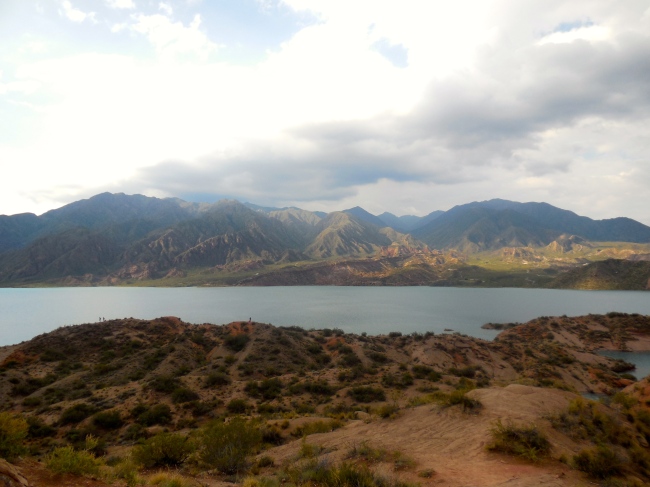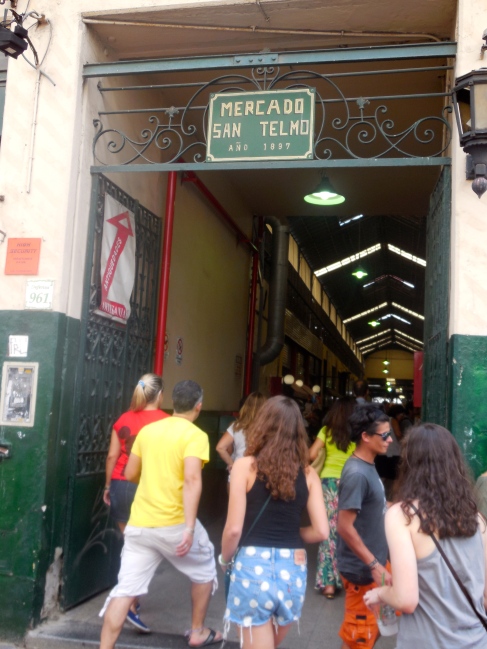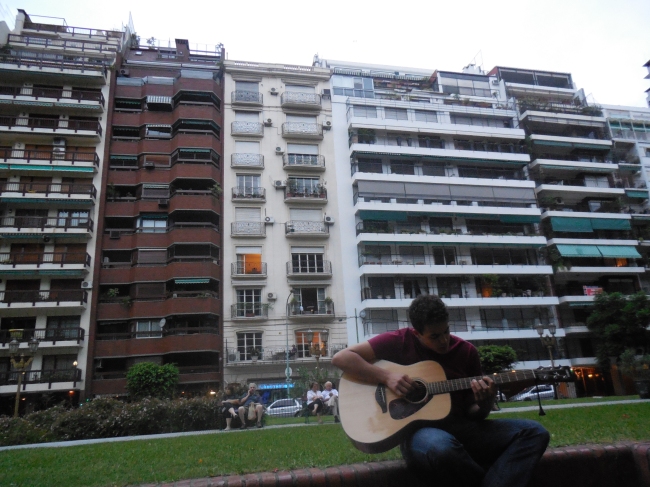
Bariloche, Patagonia (Note the Google image from an earlier post below – while the above was taken with my own camera. Patagonia is one of those places that’s just as breathtaking as the pictures promise.)
Have you ever given yourself a break from exercising that only makes you that less motivated to go to the gym when the break is over? As your motivation decreases your fears of being rusty and out of shape only grows, so that the longer you keep from exercising the harder it becomes to start again, but the louder the critical voice inside judges you for your laziness, until finally you drag yourself, miserably, back into the gym, just to stop the endless dialogue between paranoia and self-loathing?
Writing feels pretty similar (I’m only speculating, I hardly ever go to the gym).
While I can’t say my break was well deserved, it was certainly well worth it to see the Argentina outside of Buenos Aires, a land and culture apart from the bustling metropolis of porteños, crowded subways and streets clogged with taxis and colectivos.
Which is the first primary difference between Buenos Aires and the interior of Argentina – Buenos Aires is the largest and most populated city in the Spanish-speaking world, with 14 million people when you include the commuters from the suburbs, and interior is, well, empty.

I mean empty.
Aside from the small cities of Cordoba and Rosario, and the tourist capitals of Mendoza, Bariloche, and Calafate (which are mostly filled with backpacking Aussies and norteamericanos anyway), Argentina is basically empty land, sometimes interrupted by long swaths of soy crops, for thousands of miles.
Just for context, let me throw some numbers at you – Argentina has over 1 million square miles, about the size of California, Texas and Alaska combined, and a population of only 41.09 million, a measly 3 million more than California. To compare, Mexico is a little over half the size of Argentina, with three times the population.
Now, there are a lot of reasons for this, some of them being that the west is full of treacherous mountains and the south is more suitable for a penguin than a person, but it also reflects the development of this massive nation – Buenos Aires has always been the hub, not only of Argentina, but the entire Rio Plata, where the river meets the Atlantic and goods from all over South America left for the markets of Europe. Buenos Aires was mostly populated by 19th and 20th century immigrants from Europe. When Argentina grew, it was mostly within the borders of the capital city, whose residents don’t even call themselves Argentines but porteños, or “people of the port.”
All these facts can be read in a guidebook, but it’s only palpably felt when you explore Argentina – depending on how you look at it, Argentina is Buenos Aires or everything but. You’d be right to be confused, too – in the early years of the nation, there was much friction (and a civil war) between those who wanted cultural and political autonomy from the capital city, and those who felt that the only Argentine culture worth having was that which lived in Buenos Aires (I bet you can guess which side the porteños were on).
But for all the depressing nothingness and under-development that is much of the Argentine interior, they certainly have their fair share of the world’s most beautiful vistas. Which is the other feeling you get when you explore the different corners of Argentina – this is a fucking beautiful land – with the tallest mountains, largest waterfalls, largest fresh water lakes, largest glaciers, and best Malbec in the Western Hemisphere. Patagonia, which comprises the southern half of the country, is basically a playground of the outdoors, a heaven for mountaineering and hiking, a seemingly endless land of indescribable vistas.

And we just pulled over to see this on our way to someplace else.
Naturally then, it has become a hub of opposite sorts from the hub of the Rio Plata. I never thought that coming to Argentina would bring me close to so many wonderful Americans, Brits and Australians, but being the backpackers capital, every hostel and trail of Patagonia was full of new friends, inspiring stories, and adventurous folk. Bariloche, a Patagonian city in a sweet spot for many trails, was a city of the adventurous, with throngs of fresh-from-the-trail faces and 4-foot tall backpacks bobbing with exploratory energy on every sidewalk. And when you throw Mendoza in the mix, the whole region becomes a hike/raft/rappel by day, imbibe by night routine – what I would also call heaven.
All in all, I had a magical time (and I don’t use that term lightly), and I recommend implore you to spend time in Patagonia if you come to Buenos Aires – if only to know the yin to Buenos Aires’ yang that makes up the whole of Argentina.
And no, I didn’t forget. If you’ve made it this far, I do have my list of discoveries that no guidebook prepared me for, in no particular order:
1.) The art of accurate weather prediction has yet to crack the Argentine weather system, apparently, as my usually trustworthy weather apps are wrong so often that I’ve actually had better luck taking the opposite course of action when I check for the chance of rain. Yes, everyone likes to rag on weather forecasts, but I’m not exaggerating when I say that, especially when it comes to predicting rainstorms, weather forecasting is entirely useless. I’ve already taken to older methods of “feeling the air” for coming rain, or seeing if I can spy a storm cloud coming in over the Rio Plata.
2.) The land of steak and parillas seems to be giving greens a try. At least in Buenos Aires, where vegetarianism is usually met with shock if not hostility, I’ve seen more and more vegetarian markets and rotisseries open in trendy neighborhoods. It seems not even South America is safe from quinoa culture, as a new chain called “Green Eat,” specializing in overpriced organic and mostly vegetarian foods has opened three locations throughout the city.
3.) What began as a simple observation has somehow turned into a running segment: they can still do us better than we can. This episode, brunch – which, especially in the young and trendy neighborhood of Palermo Soho, is ON POINT. Endless brunch locations specializing in different cuisines, all without the added cost of novelty many American restaurants slap onto their brunch menu. My favorite is Magdalena’s Party on Thames, partly because it’s probably the only place in Buenos Aires you can find a breakfast burrito, but mostly because of the $7-a-person bottomless mimosas deal that runs all weekend.
4.) Of course, I have a bias, knowing that Magdalena’s party is owned and operated by an American ex-pat. Which brings me to my next point, ex-pat restaurants are almost too easy to find here. Numerous times have friends and I gone out for lunch or drinks at some top-rated place in a trendy neighborhood, only to find it was opened by an American and our bartender went to UCLA. I have mixed feelings about this; the wanderlust traveler inside cries for more authenticity, but the voice inside that likes chicken wings and breakfast burritos reminds me that these places are everywhere in the neighborhoods of Recoleta and Palermo, plus the porteños seem to love them – Magdalena’s party was voted Buenos Aires’ top-rated brunch place in 2011. So there.
There’s so much more I want to write – if only I could show you my list of ideas I want to share with you guys, including the odd state of sexism in Argentina and Argentina and Britain’s abusive romance. But those are for another day, hopefully soon (but probably not). Until then, saludos, chicos, keep reading and keep getting on my case about posting (you know I need it).









